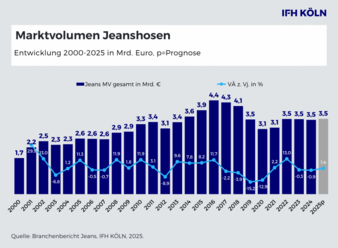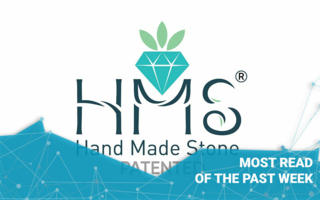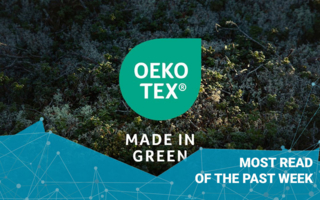29/10/2025 – Denim Market Report — auf Deutsch lesen
Denim Market Under Pressure: Opportunities for Innovation
Ultra-fast fashion and falling prices are putting the denim market under pressure. Textile companies must adopt clear strategies to secure market share and actively shape the future.
The German denim market remains stable at €3.5 billion in 2024, but challenges are mounting. Ultra-fast fashion providers like Shein and Temu are disrupting the market with low prices, while demand for sustainable products continues to grow. Textile companies face the urgent task of positioning themselves clearly to retain market share and adapt to changing consumer behavior.
Premium or Value: The New Reality of the Denim Market
The market study by IFH KÖLN and BBE Handelsberatung reveals that the German denim market has stabilized at €3.5 billion following a 15.2% decline in 2019. However, the mid-market is increasingly being squeezed. Companies that focus on either credible sustainability strategies in the premium segment or adopt a consistent value-oriented approach are better positioned to succeed. “Those who remain stuck between these extremes risk losing further market share,” explains Lukas Reischmann, Senior Consultant at BBE Handelsberatung.
Imports and Shifting Consumer Behavior
The study highlights significant changes in import structures: Poland has emerged as the leading supplier of denim to Germany, while China’s influence has waned, with its import revenue dropping from €419 million in 2010 to just €52 million in 2024. Meanwhile, the import revenue for denim in Germany reached €2.7 billion in 2024, with 193 million pairs of jeans imported. Despite growing awareness of sustainability and the rising popularity of secondhand fashion, many consumers continue to opt for extremely low-priced products from Asia. “Ultra-fast fashion providers like Shein and Temu are putting massive pressure on the denim market with their low prices. Denim, once a symbol of quality and durability, is losing its value, and purchasing power is shifting abroad,” adds Hansjürgen Heinick, Senior Consultant at IFH KÖLN.
Innovation and Sustainability: A Way Forward
The denim industry is witnessing a wave of innovation aimed at addressing its challenges. For example, projects like Fashion for Good’s “Beyond50 Denim” are exploring the use of hemp as a sustainable alternative to conventional cotton. Hemp’s lower environmental impact and ability to improve soil health make it a promising option for the future of denim production. Similarly, The Lycra Company’s “VintageFX” and EcoMade fibers are redefining denim by combining vintage aesthetics with eco-friendly solutions, offering brands new ways to meet consumer demand for quality and sustainability.
Recommendations for Textile Companies
Despite the challenges, the denim market offers opportunities for growth along the textile value chain. To stay competitive, companies should focus on sustainable materials, innovative designs, and clear positioning strategies. Transparent supply chains and certifications are key to building consumer trust and ensuring long-term success.
Learn More:
The full study, “Denim Market Report 2025” by IFH KÖLN and BBE Handelsberatung, provides detailed insights into revenue and distribution structures as well as forecasts through 2030. The study is available for purchase at the IFH KÖLN shop: https://www.ifhkoeln.de/produkt/branchenbericht-jeans-2025/.




